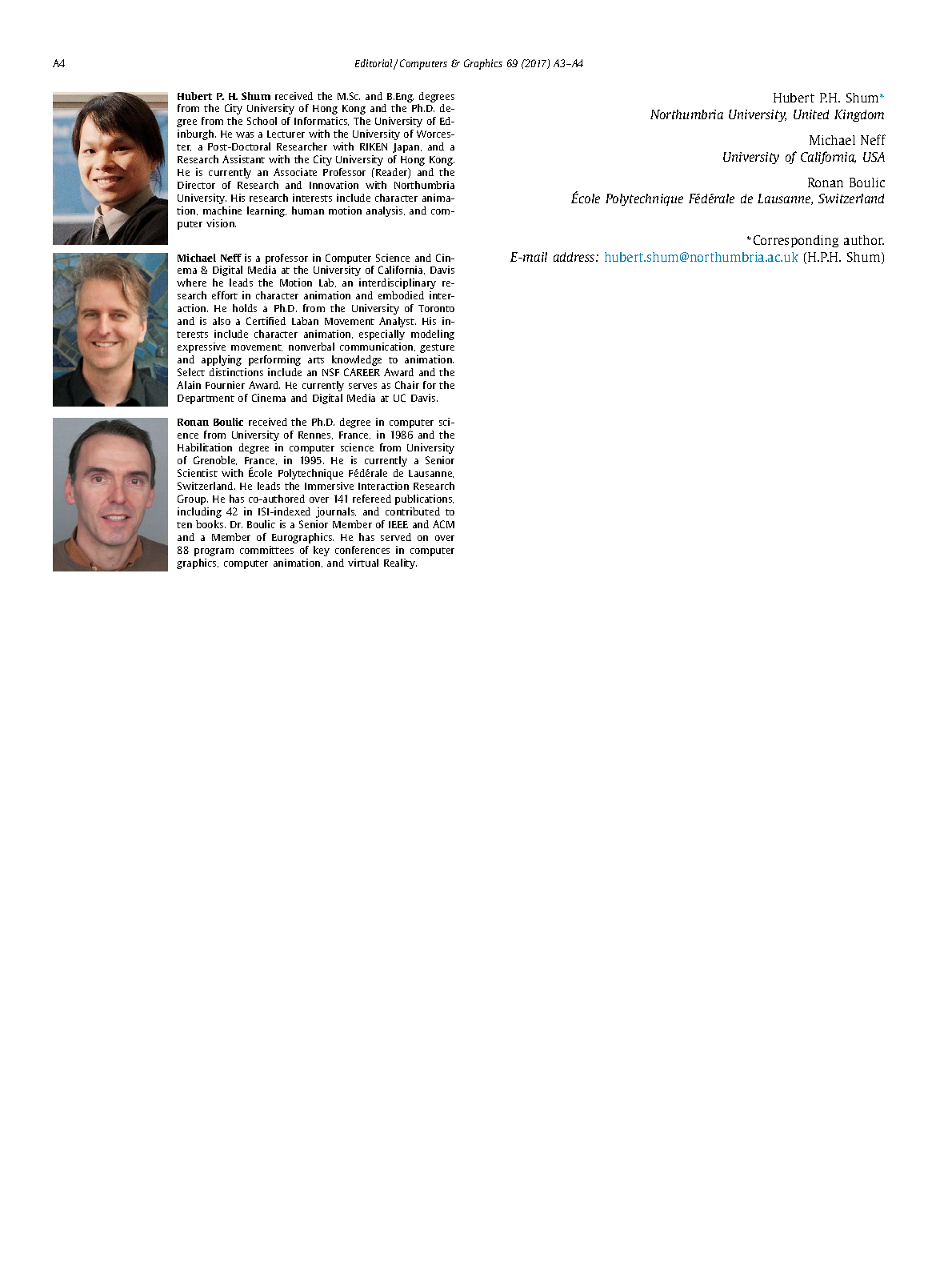Foreword to the Special Section on Motion in Games 2016
Hubert P. H. Shum, Ronan Boulic and Michael Neff
Computers and Graphics (C&G), 2017

Abstract
Games have become a very important medium for both education and entertainment. Motion plays a critical role in computer games. Characters move, objects are manipulated or move due to physical constraints, entities are animated, and a camera moves through the scene. Even the full-body motion of the player is now used as input to games. Motion is currently studied in many different areas of research, including graphics and animation, game technology, robotics, simulation and computer vision, as well as physics, psychology, and urban studies. Cross-fertilization between these communities can considerably advance the state of the art. The Motion in Games conference brings together researchers from these various fields to present the most recent results and to initiate collaboration.
This special issue of Computers and Graphics is dedicated to the best papers from the Ninth International Conference on Motion in Games (MIG), which was held in San Francisco, California, on 10-12 October 2016. MIG 2016 was sponsored by ACM SIGGRAPH and in cooperation with Eurographics. The 3 best papers were selected for this special issue from the 25 accepted papers (of 47 submissions). They were extended and went through a second review cycle. These papers cover three important areas in motion-related research. The first paper explores how motion data is gathered - an important problem in animation. It utilises prior knowledge to reconstruct hand gesture data and achieve high-quality tracking in the presence of heavy occlusions. The second paper discusses real-time interactive graphics using human motion as an input. It presents a system for synthesising 3D anatomical models using images obtained from a depth camera. The third paper focuses on motion analysis and visualisation. It enables the high-level analysis of motion quality based on the connectivity and variety of motion in a database, supporting applications in sports training and rehabilitation.







